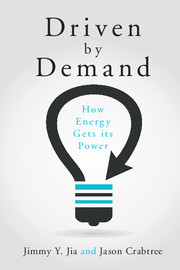Book contents
4 - Energy: the value proposition
from Part II - Three frameworks
Published online by Cambridge University Press: 05 June 2015
Summary
For every complex problem there is an answer that is clear, simple, and wrong.
H. L. MenckenImagine a future where an automobile can drive 100 miles per gallon (mpg). To an environmentalist this could be a dream come true: it would represent the quadrupling of fuel efficiency. Fuel consumption would drop, and we would become less dependent on foreign oil. Low-income families would not have to dedicate nearly as much of their income to commute to work. People would be able to travel more economically, and businesses could expand their products and service offerings to larger geographic areas with a lower fuel expense.
If such a future came to pass, these ostensible benefits would ripple across society with a number of foreseeable and emergent effects. Not all would be positive. Compare a normal car achieving 25 mpg to the fuel-efficient 100-mpg car of the future. Assuming standard driving patterns and $4.00 per gallon of gasoline, the normal car would consume nearly $2500 per year in gas. The fuel-efficient vehicle would only require $624 per year, representing a significant savings and benefit to the individual. In the US, the fuel tax is used to maintain the streets, highways, bridges, and tunnels. The fuel tax varies by state, and the national average tax is $0.48 per gallon. This means that an average driver would pay roughly $300 per year in fuel taxes. The fuel-efficient car would only pay $75 per year, not nearly enough to cover the upkeep of the roads. The government would be forced to make up the difference by raising registration fees, levying taxes elsewhere, or selling bonds to pay for infrastructure.
It is easy to see how a new technology applied to business-as-usual practices can lower fuel consumption. However, it is difficult to predict how a new technology will change future business practices.
- Type
- Chapter
- Information
- Driven by DemandHow Energy Gets its Power, pp. 53 - 90Publisher: Cambridge University PressPrint publication year: 2015

